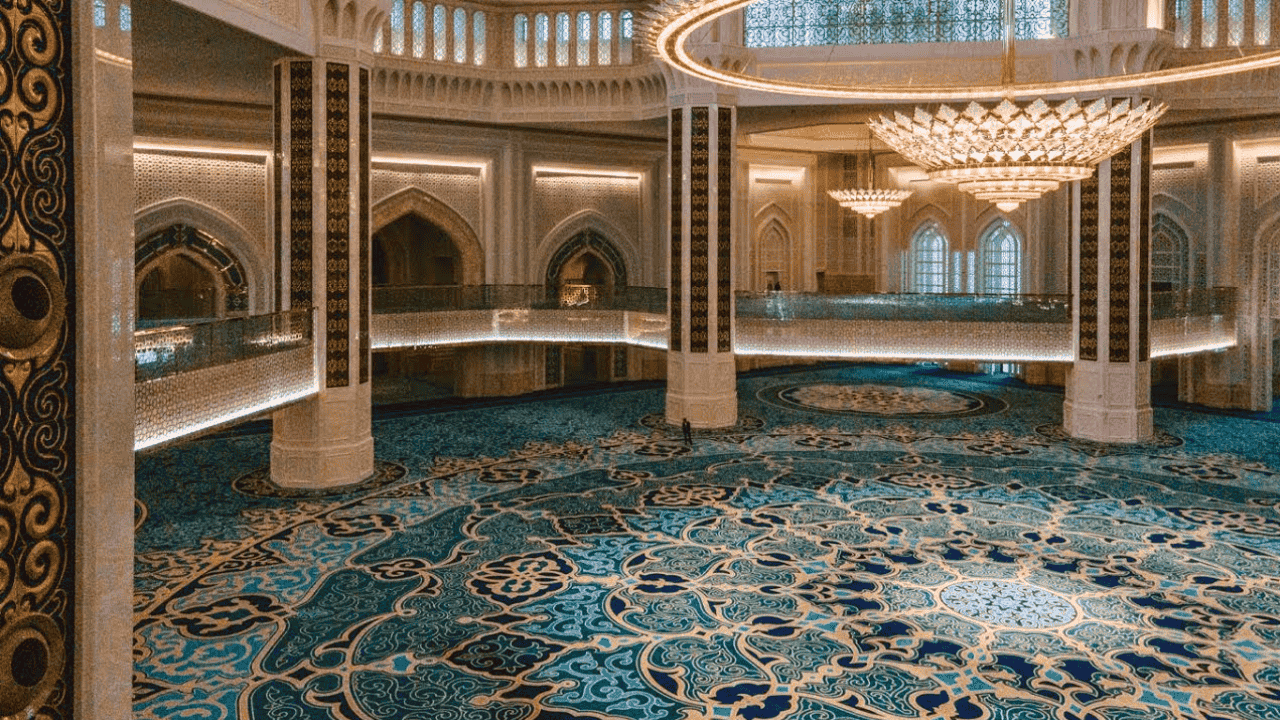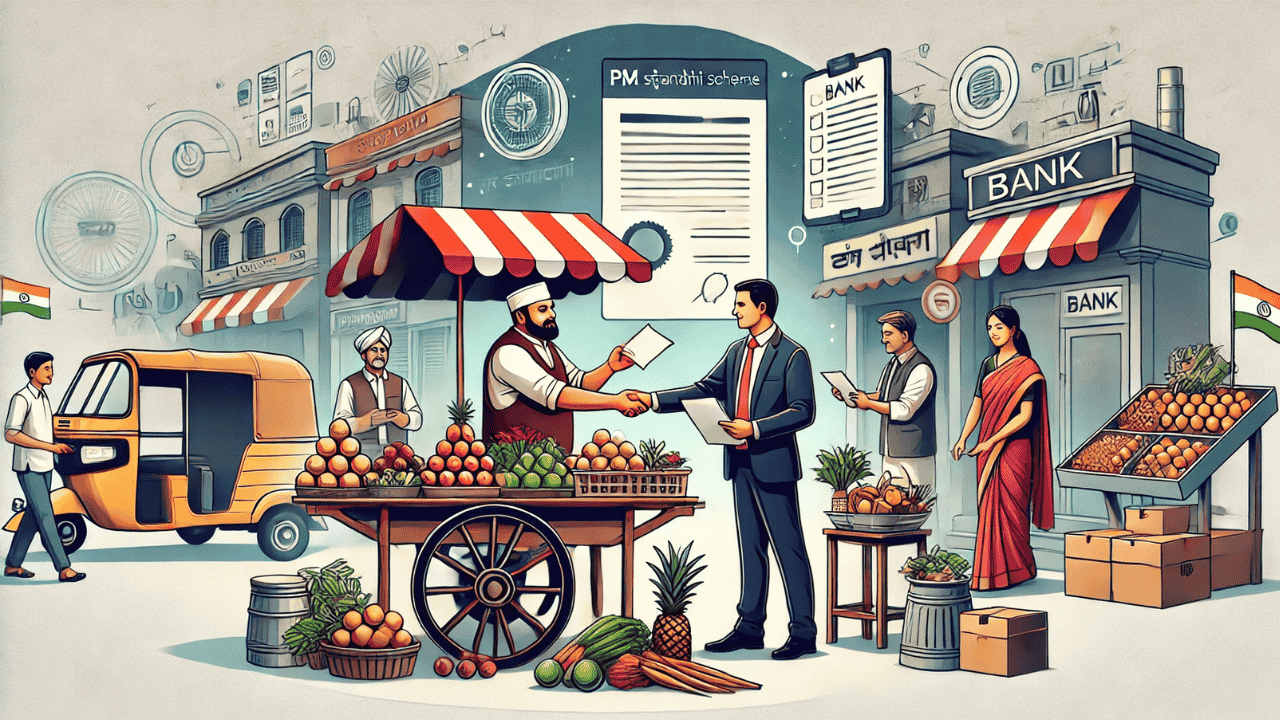Introduction: India’s Global Craftsmanship Achievement
The city of Bhadohi in Uttar Pradesh has once again placed India’s traditional craftsmanship on the global stage. On October 7, 2025, the Guinness World Records officially recognized the world’s largest handcrafted (hand-tufted) carpet made in Bhadohi. The carpet has been laid in the Grand Mosque of Astana, the capital of Kazakhstan, which is the largest mosque in Central Asia.
This achievement is not only proof of the skill of Indian artisans but also a symbol of the growing cultural and trade relations between India and Kazakhstan.
World Record Carpet: Key Facts
Size and Dimensions
Spanning 12,464.29 square meters (1,34,164 sq ft and 72 sq in), this massive carpet is named “Jannatul Firdaus.”
At its center lies a 70-meter-wide circular medallion design, which is its most striking feature.
Production Process
Duration: Completed in six months between January and June 2021
Artisans: Over 1,000 skilled artisans contributed
Installation Time: Took 50 days to install inside the mosque
Cost: Approximately ₹12–13 crore
Manufacturer: Patodia Contract (parent company of Hands Carpets)
Material and Design
The carpet was prepared in 125 separate pieces, each measuring 5 m × 25 m.
It is woven entirely from New Zealand wool and designed in Arabic–Persian style, featuring shades of blue, green, white, and indigo.
Only three tools were used during production — a tufting gun, scissors, and metal frames, while most of the work was done entirely by hand.
Astana Grand Mosque: Architectural Marvel of Central Asia
Key Features
Area: Spans 57,000 square meters
Capacity: Accommodates 10,000 worshippers at once
Main Dome: World’s largest dome — 83.2 m tall, 62 m in diameter
Minarets: Four 130-meter-high minarets, symbolizing the five pillars of Islam
Entrance Gate: 12.4 m high, made of African iroko wood — world’s tallest wooden entrance gate (weight: 1.5 tons)
Year of Construction: 2022
The mosque’s walls feature a 100 m long, 22.4 m high mosaic wall inscribed with 99 names of Allah, containing 25 million colored glass pieces.
Another highlight is a 197.8 m long Qur’an calligraphy scroll, one of the longest in the world.
Bhadohi: The Carpet Capital of India
Historical Background
The carpet-weaving tradition of Bhadohi dates back to the 16th century, during the reign of Mughal Emperor Akbar.
Historical records state that Persian master weavers, during their visit to India, stopped in Madhosingh village of Bhadohi and set up the first loom there.
Geographical Indication (GI) Tag
On 4 September 2010, Bhadohi’s handcrafted carpets were granted the Geographical Indication (GI) Tag.
The GI tag covers carpets made across nine districts — Bhadohi, Mirzapur, Varanasi, Ghazipur, Sonbhadra, Kaushambi, Allahabad, Jaunpur, and Chandauli.
Economic Importance
Bhadohi–Mirzapur region is South Asia’s largest handwoven carpet center
About 3.2 million people (2.2 million rural artisans) are employed in this industry
Over 60% of India’s total carpet exports originate from Bhadohi
Annual export value: ₹17,000+ crore (≈ US$1.39 billion)
Major export markets: USA (58.6%), Germany, Australia, Europe
Product Diversity
Various types of carpets are made in Bhadohi, including hand-knotted, cotton dhurries, chapra mir, loribaft, indo-gabbeh, and indo-persian designs.
India–Kazakhstan Relations: Economic and Cultural Dimensions
Trade and Investment
Kazakhstan is India’s largest trading partner in Central Asia.
In 2024, bilateral trade reached US$974.9 million, with India’s exports to Kazakhstan amounting to US$464.2 million.
Since 2005, India has invested over US$500 million directly in Kazakhstan.
Institutional Framework
The India–Kazakhstan Inter-Governmental Commission (IGC), established in 1993, serves as the top institutional mechanism for bilateral cooperation.
There are nine Joint Working Groups (JWGs) operating in fields such as trade, defense, transport, IT, and hydrocarbons.
Future Prospects
Both nations aim to increase bilateral trade to US$3 billion.
Direct Delhi–Astana flights are scheduled to start in May 2025, expected to boost trade and tourism.
Indian Carpet Industry: Global Overview
Global Position
India ranks among the top producers and exporters of handcrafted carpets in the world, commanding about 35–40% of global exports.
FY 2024 Performance
Total Exports: US$1.39 billion
June 2024 Exports: US$121.44 million (up from US$109.76 million in June 2023)
Annual Growth Rate (CAGR 2017–18 onwards): 7%
Government Initiatives
RoSCTL Scheme: Refund of State and Central Taxes and Levies
Recognition of Prior Learning (RPL) Program: Benefited 74,891 artisans
35 Handicraft Technical Training Centers: Trained 2,476 artisans
India Carpet Expo (October 2023): Asia’s largest, with 350 foreign buyers from 45 countries
Challenges
The industry faces several challenges, including:
50% tariff by the USA
Competition from machine-made carpets of China and Turkey
Shortage of skilled artisans
Inadequate infrastructure
Why This Matters for Exam Preparation
UPSC Prelims Perspective
This topic is relevant for both Static GK and Current Affairs:
Geographical Indication (GI) Tag: Bhadohi carpets serve as a key GI example — important for GS Paper I (Indian Culture) and GS Paper III (Economy).
Industrial Landscape of Uttar Pradesh: Bhadohi as the “Carpet City” is a frequently asked topic in state and national exams.
India–Central Asia Relations: Kazakhstan as India’s biggest Central Asian trade partner — relevant for International Relations.
Export Promotion Schemes: Schemes like RoSCTL, MEIS/RODTEP are vital for Economy-based questions.
UPSC Mains Perspective
GS Paper I (Indian Culture & Heritage): Preservation and promotion of Mughal-era traditional crafts in a modern context.
GS Paper III (Economy):
Contribution of the handicraft sector to employment (22 lakh artisans)
Export promotion policies and trade balance
Challenges and reforms in the MSME sector
GS Paper II (International Relations):
India–Kazakhstan ties
India’s soft power in Central Asia through cultural diplomacy
Essay Topics:
“Indian Handicrafts: A Fusion of Tradition and Modernity”
“Culture as Soft Power”
“Rural Employment and Traditional Industries”
State PCS Exams (Especially UPPSC)
Possible questions include:
Bhadohi is famous for which industry?
Which districts are covered under the Bhadohi Carpet GI Tag?
How many people are employed in the carpet industry?
Other Competitive Exams
Banking, SSC, and Railway exams often feature questions on Uttar Pradesh’s key industries, GI-tagged products, and recent achievements.
Interview/Personality Test Relevance
Useful discussion themes:
Modernization of traditional industries
Rural employment and skill development
Cultural diplomacy as an instrument of India’s soft power
Preservation of local crafts in the age of globalization
Key Takeaways for Aspirants
Bhadohi = Carpet City (GI Tag: 2010)
Guinness Record: 12,464.29 sq. m recognized on 7 October 2025
Astana Grand Mosque: Largest mosque in Central Asia, built in 2022
India’s Export Share: 60% of carpet exports from Bhadohi
Kazakhstan: India’s largest Central Asian trade partner
This news highlights the intersection of India’s cultural heritage, economic potential, and global diplomacy — making it highly relevant for UPSC and other competitive exams.
Stay Updated:
For more current affairs updates, stay connected with Atharva Examwise.
Subscribe to our YouTube Channel for daily news analysis and exam-oriented insights.







